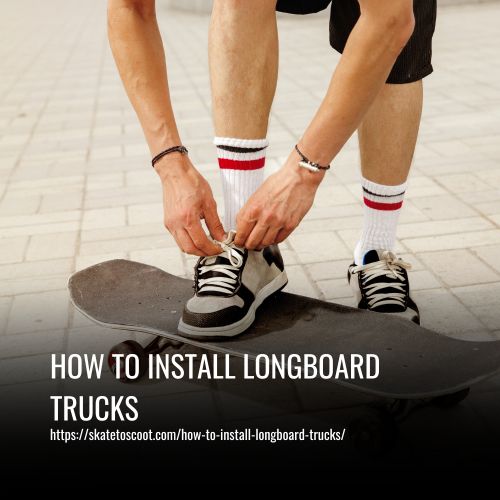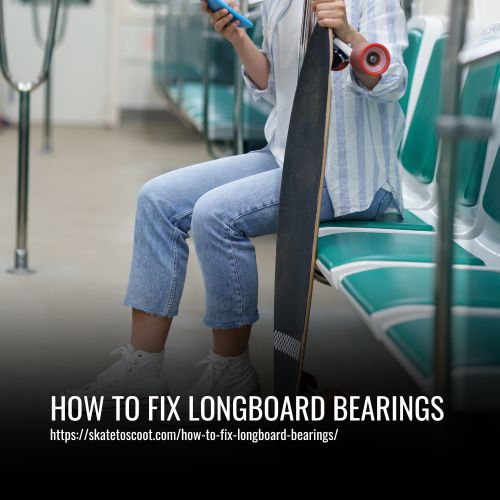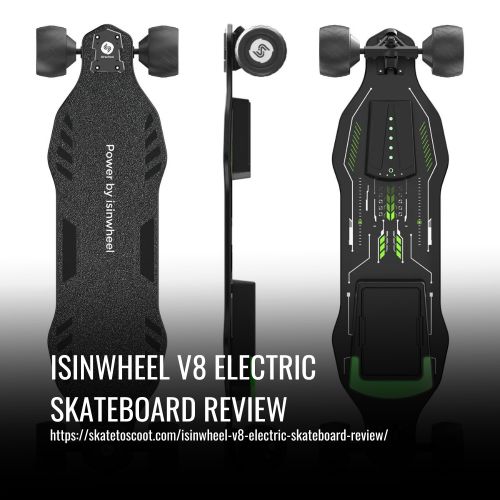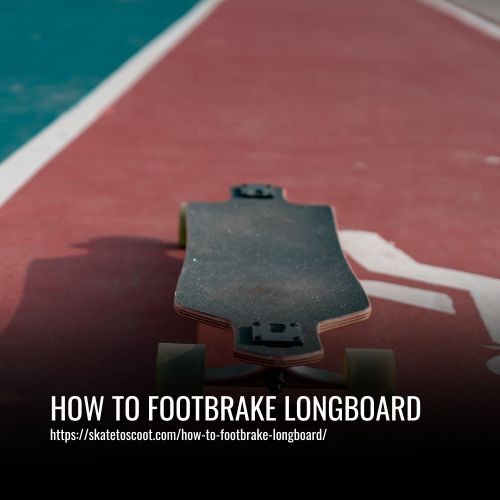As an Amazon Associate we earn from qualifying purchases.
Are you ready to upgrade your longboard with new trucks? Installing longboard trucks may seem like a daunting task, but with the right guidance, it can be a straightforward process. Whether you’re a beginner or an experienced rider looking to customize your ride, this article will provide you with all the steps you need to know to install longboard trucks like a pro.
Before we dive into the installation process, let’s talk about why upgrading your longboard trucks can make a significant difference in your riding experience. The trucks are the metal T-shaped components that attach the wheels to the deck of your longboard, and they play a crucial role in how your board handles and turns. By installing new trucks, you can improve stability, maneuverability, and overall performance, allowing you to take your longboarding skills to the next level.

How to Install Truck On Longboard:
Installing longboard trucks on your board is a simple process that anyone with basic DIY skills can accomplish. Here is a step-by-step guide on how to do it:
- Check Your Trucks: Before you begin, make sure you have the correct size of trucks for your longboard. Every skateboard and longboard has different-sized trucks. You can check the size by looking at the underside of your board or measuring the distance between the center of each hex screw and the edge of the truck.
- Set the Bushings: Properly setting the bushings is crucial for the positioning of your trucks. Measure the distance between the mounting holes and the wheel edges and add about 1/8 inch to determine the length of the bushings.
- Tighten the Bottom Hex Screw: One at a time, tighten the hex screw on the bottom of each truck. Use a skate tool to tighten it all the way and then give it a few extra turns. Be careful not to over-tighten, as the screws should be snug but not too tight.
- Tighten the Top Hex Screw and Shims: Now, tighten the top hex screw and the shims (washers) on top of the trucks. Use a skate tool to tighten the hex screw all the way, then tighten it a few more times. Finally, use the skate tool to tighten the hex screws on either side of the top screw.
- Test out Your New Trucks: Put your wheels back on and test out your new trucks. You should notice improved turning capabilities. If the trucks feel too hard or too easy to turn, you may need to adjust the length of the bushings. Take some time to get used to your new setup before attempting any advanced maneuvers.
What you’ll need?
To install longboard trucks, you’ll need a few essential tools. The most important tool is a skate tool, which combines a skate blade, screwdriver, pliers, and more into one convenient device. Ensure that you purchase a skate tool specifically designed for longboard trucks. This tool will be used to tighten your trucks securely.
You’ll also need a ruler or measuring tape to ensure that your bushings are installed at the correct length. This measurement tool will help you achieve the desired level of stability and responsiveness.
If you have quick-release wheels, a skate wrench will be necessary to tighten the hex screws correctly. This wrench ensures that your wheels are securely attached, preventing any issues during your ride
How to Topmount Longboard Trucks
Top-mounting longboard trucks is a popular method of attaching them to the underside of the deck. Here’s a simple guide on how to top-mount your longboard trucks:
- Put the Screws into the Holes: Start by inserting the screws into the holes on your longboard deck. Place all eight screws in their respective holes, ensuring that they go in from the top side of the deck.
- Flip the Deck: Turn your longboard upside down so that the underside is facing up. This will allow you to see the tail of the screws sticking out.
- Slip the Riser Pads onto the Screws (Optional): If you’re using riser pads in your setup, slide them onto the screws. Riser pads help prevent wheel bite, which can occur when the wheels rub against the deck while turning.
- Put the Baseplates onto the Screws: Align the baseplate of each truck with the holes on the deck. Push each screw so that it passes through to the other side of the baseplate. Make sure to place each truck correctly based on the type of truck you have. Standard Kingpin Trucks: For Standard Kingpin trucks, position them so that the kingpin and bushings face inwards. The kingpin and one set of bushings should point toward the center of the deck. Reverse Kingpin Trucks: With Reverse Kingpin trucks, position them so that the kingpin and bushings face outward. One set of kingpin-bushing should face toward the tail, while the other set faces the front of the deck.
- Attach the Nuts Loosely: Attach all eight nuts to the screws, giving each nut a half-turn. This will hold the trucks in place loosely before tightening them fully.
- Tighten the Nuts to Your Preference: Using a skate tool or adjustable wrench, begin tightening the nuts. Start with the first nut and then move to the one diagonally across from it in a crisscross pattern. Tighten the nuts to your desired preference and riding style.
Remember to give your longboard a spin to test how the setup feels. If it feels too loose or too tight, adjust the nut tightness accordingly until you have the perfect setup for your riding style.
Tips and Tricks to Install Longboard Truck Placement
When it comes to longboard truck placement, it’s important to follow the instructions given to your trucks. This will ensure that you have the best setup possible and are able to make the most of your riding experience.
1. Choose the Right Trucks for Your Needs:
Before you begin the installation process, make sure you have the correct type of longboard trucks for your riding style and deck. Consider factors such as the type of wheels you’ll be using and the width of your deck, as these can all impact the performance and stability of your ride.
2. Determine the Ideal Truck Width:
The width of your trucks should match the width of your deck. A wider truck provides more stability at higher speeds, while a narrower truck offers a more responsive ride. Ensure that the trucks are wider than your deck to avoid wheel bite, which can occur when the wheels rub against the deck while turning.
3. Consider the Baseplate Angle:
The baseplate angle, which refers to the angle at which the truck pivots, can affect how your longboard performs. A higher baseplate angle results in more responsive and maneuverable trucks, while a lower angle provides stability at high speeds. Consider your riding style and preferences when choosing the baseplate angle that suits you best.
4. Take Note of Truck Holes:
Most longboard decks have multiple truck holes to accommodate various riding styles and truck positions. Experiment with different truck hole combinations to find the ideal placement that offers the best balance and control for your riding style.
5. Test and Adjust:
Once you have installed your longboard trucks, take your board for a test ride to ensure everything feels right. Pay attention to any instability or wheel bite. Adjust the tightness of your trucks accordingly to find the sweet spot that provides a smooth and comfortable ride.
Adjust The Truck To Personalize The Ride
Adjusting the truck of your longboard is essential for personalizing your ride and optimizing performance. The tightness of the kingpin is the most critical factor in how your board behaves when turning. By tightening the kingpin, you make the trucks less responsive but more stable at high speeds. Conversely, loosening the kingpin increases maneuverability and turning ability.
To find the perfect balance for your ride, experiment with different levels of tightness. Take your board for a test ride and pay attention to how it feels. If you prefer stability and control, tighten the kingpin. If you want a more responsive and maneuverable ride, loosen it.
Additionally, the position of the bushings can affect the flexibility and responsiveness of the trucks. Consider using softer bushings for a smoother and easier turn, or opt for harder bushings to enhance stability and control.
Lastly, experimenting with angled risers can also impact the ride’s responsiveness and control. Angled risers change the geometry of the trucks, further enhancing the customization options for your ride.
Double-Check The Installation And Test It Out
Once you have finished installing your longboard trucks, it is crucial to double-check the installation and thoroughly test them out before hitting the road. This ensures that the trucks are properly mounted and tightened for a safe and enjoyable ride.
During the double-checking process, take the time to inspect each bolt, nut, washer, and bushing for any signs of looseness or damage. Make sure that everything is securely in place and tightened to the appropriate level. This will help prevent any potential accidents or issues while riding.
After double-checking the installation, it is essential to test-ride the board on a flat surface. Take a few turns and pay attention to how the trucks respond. If you feel any wobbling or the board is difficult to turn or control, it may indicate a problem with the installation or adjustments.
To personalize your ride, consider adjusting the trucks according to your weight, riding style, and terrain. Experiment with different levels of tightness to find the perfect balance of stability and maneuverability. You can also try using softer or harder bushings to enhance the flexibility and responsiveness of the trucks.
FAQs
Yes, trucks play a vital role in determining the performance and ride quality of a longboard. They affect stability, maneuverability, and control.
Trucks on a longboard should face towards the nose and tail of the board. The kingpin should be facing towards the center of the deck.
Tight trucks offer more stability and control, making them ideal for tricks that require precise movements. However, it ultimately depends on personal preference and riding style.
Loose trucks allow for easier turns and greater maneuverability. They are popular among riders who prefer a more surf-like feel and enjoy carving or freestyle riding.
If your longboard slows down quickly, it could be due to various factors, such as wheel bite (when the wheels rub against the deck), worn-out bushings, or inadequate speed washers.
No, longboard trucks are not universal. They come in different sizes, shapes, and mounting styles to accommodate various riding styles and deck sizes.
In most cases, longboard trucks cannot be directly installed on a skateboard deck. Skateboard trucks have a different design and are usually narrower, making them incompatible with longboard decks.
Speed washers are not essential, but they can enhance the performance of your longboard. They reduce friction between the bearing and the nut, allowing for smoother and faster rotations.
Baseplate angles refer to the angle between the deck and the truck’s baseplate. They affect the stability and responsiveness of the longboard. Higher angles provide quicker turns, while lower angles offer better stability at higher speeds.
Bushings come in different shapes and durometers (hardness levels). Softer bushings are ideal for lighter riders or those who prefer a more responsive and turn-oriented ride. Harder bushings are suitable for heavier riders or those seeking stability at high speeds.
If the holes in your longboard deck don’t align with the truck holes, you can use riser pads to bridge the gap or consider drilling new holes carefully to match the truck’s mounting pattern.
The hanger size of your longboard truck should match the width of your deck. Opt for a wider hanger for wider decks and a narrower hanger for narrower decks, ensuring proper wheel clearance.
To install longboard trucks, make sure the kingpin faces towards the center of the deck, with the trucks facing towards the nose and tail of the board. Use a skate tool or an adjustable wrench to tighten the nuts securely.
Conclusion:
Installing longboard trucks may seem like a daunting task, but with the right tools and a little patience, you’ll be cruising down the streets in no time. Remember to take your time, follow the step-by-step instructions, and don’t be afraid to ask for help if you need it.
So go ahead, grab your board, and get ready to experience the thrill of gliding on your very own custom ride. Happy skating!
Amazon and the Amazon logo are trademarks of Amazon.com, Inc, or its affiliates.



